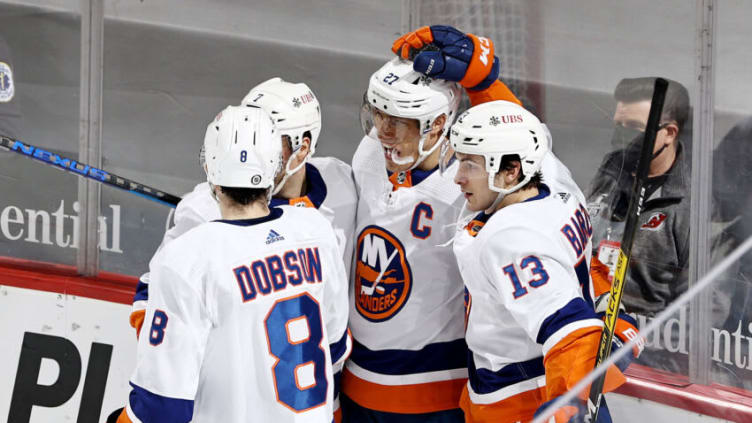Islanders power play woes started with Anders Lee injury

One of the big talking points from the New York Islanders season was the power play and how..well, powerless it was. The Islanders finished the 2020-21 regular season with an 18.8% efficiency on the man advantage. That ranked them 20th in the NHL.
For three years now, the Isles have been in the bottom half of the NHL for PP efficiency. It’s frankly getting old to see the Isles waste what should be countless scoring opportunities.
But if we take a close look at the 20-21 season, we’ll see that the power play was actually functional at one point and was in the top half of the NHL through most of the year.
New York Islanders power play wasn’t always that bad
The downfall of the power play? Anders Lee‘s injury. You can cut the season in two with pre-Lee injury on one side and post-Lee injury on the other and see two very different power plays.
Lee was injured in the first period on March 11st against the New Jersey Devils, so pre-injury is January 14 to March 10 (26 games) while post-injury is March 11 to May 10 (30 games).
Here’s how the power play shakes out for both halves:
Pre-Lee Injury
- Efficiency: 23.5 (13th)
- Goals: 16
- Opportunities: 68
- Shots/Opp: 1.53
- HDCF/Opp: 0.617
- xGF: 13.65
Post-Lee Injury
- Efficiency: 14.5 (24th)
- Goals: 11
- Opportunities: 76
- Shots/Opp: 1.34
- HDCF/Opp: 0.68
- xGF: 14.77
(Shots, HDCF, and xGF from NaturalStatTrick. The rest from NHL.com.)
The glaring difference here is the efficiency rate. The Isles dropped nearly ten percentage points when Lee was sidelined with his ACL injury. Everything else was pretty close. They generated just as many opportunities, they shot about as frequently, created enough high-danger chances, and were even expected to score roughly the same number of goals.
But that efficiency took a massive dip when Lee was no longer out there.
What About Brock Nelson?
A second issue can be traced to Brock Nelson. Again, keeping that Anders Lee injury line through the season shows two very different Brock Nelson‘s. In the first half, he leads all players with six power-play goals but only has one in the second half.
And you can’t tie Brock Nelson’s PPG drought in the second half to the absence of Anders Lee. The two were rarely on the ice together on the power play. According to NaturalStatTrick, they shared ice for 5:36 on the man advantage.
Nelson Stats Pre-Lee Injury:
- Goals: 6
- Shots: 17
- iHDCF: 13
- ixG: 3.05
Nelson Stats Post-Lee Injury:
- Goals: 1
- Shots: 13
- iHDCF: 16
- ixGF: 2.82
(Stats from NaturalStatTick)
Brock was absolutely snake-bitten in the second half. He generated about the same number of shots and high-danger opportunities and should have scored roughly the same number of power-play goals (3), but fell well short of that with only one.
With Brock Nelson cold as ice, and with Anders Lee sidelined, the Islanders power-play was without its two biggest weapons.
The Islanders captain should be healthy and ready to go for puck drop on the 2021-22 season, a full season of Lee should boost the Isles power play to float around the middle of the pack in the NHL at about 20%. And that’s all the Islanders need from the man-advantage next season.